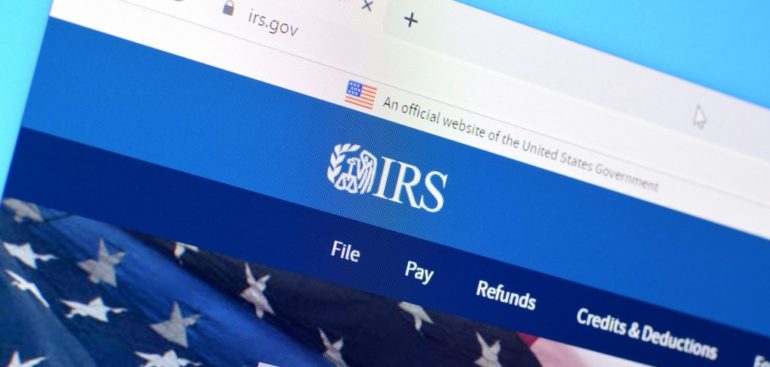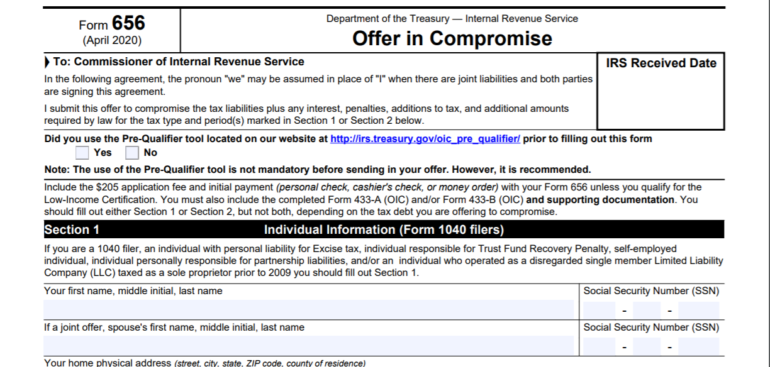The tax return season usually causes headaches to many individuals, self-employed and corporations alike. Buzz words like tax returns, Form 1040, Form 1040X, Form 1120S, and Schedule A only come to confuse things some more. This comprehensive guide sheds light to key must-knows so you begin to have a clearer idea of tax preparation, tax returns, and what is required from you.
What Is a Tax Return?
A tax return or income tax return is a document that you need to file with either the state tax board or the IRS (Internal Revenue Service) which reports your income, as well as your deductions (i.e., your business profits and losses) and other details about your tax liability or tax refund. A tax return allows you to:
- Request a refund for tax overpayment.
- Schedule tax payments.
- Calculate your tax liability.
Tax returns are filed annually for any business or individual with capital gains, interest, wages, and other reportable income/profits for the previous year, with the deadline being April 15. A tax return has the following three major sections:
- Income – It lists all your income sources. You need to report royalties, self-employment income, dividends, and wages, usually using a W-2 form.
- Deductions – Things like interest deductions on specific loans, alimony paid, and contributions to retirement plans are typical examples of deductions that decrease tax liability. The final list, though, varies among jurisdictions. In general, the majority of business operations-related expenses are deductible (for business owners). You can also choose to itemize your deductions instead of using the standard deduction for your filing status.
- Tax credits – These refer to the sum of the owed taxes or the amounts that reduce tax liabilities. More than often, education, pensions, and the care of dependent seniors and children are also attributed tax credits. However, they, too, vary among jurisdictions.
At the end of the fiscal year and after filing your tax return, you will be able to tell whether you owe taxes or have overpaid taxes (hence, need to be refunded). If you choose not to get your overpaid taxes amount back, it will roll into the next tax year. Now, if you owe taxes, you can pay your debt in monthly (or quarterly) installments or as a single payment. As for self-employed individuals, most of them can reduce their tax burden by making advance payments every quarter.
What Types of Tax Returns Are There?
Of the many federal income tax return forms, the most commonly used ones are:
Form 1040 (for Individuals)
Form 1040 is a long form, which means additional paperwork needs to be filed due to the many tax credits that show up only there. You can consider choosing this form if you (1) itemize deductions, (2) have other income to report, (3) have more complex investments to report, and (4) your earnings are larger. Nevertheless, this extra work that needs to be done with Form 1040 is offset by the extra savings specific credits can produce for you (i.e., taxes paid on a foreign country). Plus, you have a wealth of deductions ready to be claimed directly on the form (no adjustment needed) which enables you to reduce your gross income (i.e., alimony payments, incurred moving expenses, and self-employment taxes). This, in turn, can help you lower the income sum that will be eventually taxed.
You should file Form 1040 if:
- You have received income from a property sale.
- You are self-employed.
- You itemize deductions.
- Your combined incomes (for joint filers) or your personal income is over $100,000.
Important note: If your current situation is different from that of the previous year(s) (i.e., you can make itemizing more profitable for you because you now have more deductions), you will probably need to file a different form. There is no obligation to continue using a particular income tax form just because it suited you in the past.
Form 1040X (for Individuals)
This is a form you need to file if you (1) found out that you qualify for credits or deductions you didn’t take or (2) have spotted an error on a tax return or (3) your tax return is missing some income. In other words, Form 1040X can be considered your formal claim for a refund.
Preparing a Form 1040X does not necessarily require the completion of a new tax return. You only need to update the numbers that should be altered. Remember that you can amend your taxes if you have prepared your original tax return using Form 1040, 1040-SR, 1040A,1040NR-EZ, 1040NR, 1040EZ-T or 1040EZ. For business owners with net operating losses in one of the next two tax years, Form 1040X can help carry back these losses. Any refunds will show after 8-12 weeks from the time you made the amendment.
To prepare Form 1040X, you need any documentation that relates you to the changes you have made (i.e., proof of payment for a newly claimed deduction) and a copy of your original tax return (the one you wish to amend). Beware, though, that you can file an amended tax return either within 24 months of actually paying the tax for that year or within 36 months of the original filing deadline. Depending on the circumstances, you may have more than three years, though (i.e., incapacitated individuals).
Form 1040EZ (for Individuals)
The Form 1040EZ is the simplest IRS form (a single page), but limits your options when it comes to ways you can save on your tax bill as it restricts you to claiming the tax break called EITC (earned income tax credit), which has been designed to help out individuals with a low income. That being said, you should file it if:
- Your interest income is below $1,500.
- Your combined incomes (if a joint filer) or single income is no more than $100,000.
- You are married but filing jointly, or single.
- You have no dependents.
- You are younger than 65. Note that in case you file a joint return, your spouse should also be below 65 years old.
- You are not legally bound during the previous tax year (this applies to your spouse, as well, if filing jointly).
Form 1120 (for C-Corporations)
C corporations, as well as LLCs that file as corporations need to file their income taxes via the Form 1120. After successfully completing Form 1120, you will have a pretty good idea of how much the corporation will be called to pay in taxes. Remember that you will be required to pay quarterly estimated taxes rather than all the money in one lump sum.
To file Form 1120, you need to enter:
- Your total income.
- The date you incorporated.
- Your EIN (Employer Identification Number).
- Your capital gains and earned royalties.
- The COGS (Cost of Goods Sold).
- The gross receipts.
- The total assets held by your corporation.
- Any interest and dividends earned.
- Your tax deductions.
- The business tax credits for which you want to apply.
Form 1120-S (for S-Corporations)
If you are a corporation with an elected S status, you need to file a Form 1120-S tax return annually. In this case, the reported income usually flows through directly to you, the business owner. This means that these companies do not need to pay tax at the corporate level since any reported income is taxed on the business owner’s Form 1040 tax returns. For that reason, the individual does not pay additional taxes on their Form 1040 returns.
Form 1065 (for Partnerships)
This is typically filed by partnerships once a year and contains information related to their income, credits, deductions, losses, and more. The particularity of Form 1065 is that it has no federal tax (most of the time, at least). This is because the partners report income flows on their personal tax returns.
What is a 1040 Schedule A?
Those considering to itemize their taxes will need to attach an IRS Schedule A to their Form 1040 so they can claim itemized deductions on their tax returns. For those not familiar with what itemizing taxes is, let’s say that instead of taking the flat-dollar standard deduction, you can choose from the many individual tax deductions out there at tax time. If the amount of your itemized deductions exceeds the standard deduction sum, you save money. for your reference, the standard deductions for 2020 tax year were as follows:
- Single filing status ($12,400).
- Married or filing jointly ($24,800).
- Married or filing separately ($12,400)
- Head of household ($18,650)
Schedule A is divided into the following sections (each having several subsections):
- Medical and dental expenses.
- Casualty and theft losses (in a disaster area declared as such by the federal government or of certain property that produces income).
- Gifts to charity.
- Interest you paid.
- Taxes you paid.
- Other itemized deductions (i.e., gambling losses, amortizable bond premiums, etc.).
- Total itemized deductions.
As soon as you have tallied the itemized deductions you wish to claim, you should enter them (the total sum) on your Form 1040. Also, expect to be asked to provide:
- Form 1098 to show the interest you paid for the year (ask your mortgage lender for it).
- Your sales tax records.
- Your state income tax records.
- Your property tax bills.
- Any charitable donations records.
- Receipts for medical expenses that have not been reimbursed.
What is a Schedule C?
An IRS Schedule C (headlined Profit or Loss From Business (Sole Proprietorship)) is usually filed by self-employed individuals who need to report how much money they lost or made in their business. Schedule C must be completed and then attached to your income tax return. In the majority of cases, you will also be required to fill out Schedule SE (Self-Employment Tax) along with the five-part Schedule C.
Note that sole proprietorships are companies that do not have a Partnership or Corporation status. They are small businesses operated and controlled by their owners rather than a legal business entity. It does not matter if you have employees or not (or even an office). As long as you get paid for work that you do, you run a sole proprietorship, provided that you earn at least $400 of net profit annually.
What is a Schedule E?
Schedule E is prepared by those that have income reported on a Schedule K-1 from an S corporation or partnership, receive royalties, build their own home, or earn rental income. You will need to report both your personal tax return and the gross income and losses from these activities. Depending on the type of activity you do, you should include different things.
For example, for rental income, you need to report prorated rents when you bought the property, the refunds you have received for utilities, and the rental income. As for some of the expenses, these can include marketing and advertising costs (i.e., the cost to advertise on certain publications or sites), travel costs needed to maintain your rentals, cleaning and maintenance costs, repairs, depreciation expenses, and more.
How Long Should You Keep Your Tax Returns?
According to the IRS, just how long you need to keep your tax returns depends on several factors, such as the event, the type of expense, and the action the document records. Generally speaking, it is best to maintain a record of your tax returns for three years after you filed the return or, at least, until the period of limitations for the particular tax return (the item of credit, deduction income shown on the tax return) ends.
However, we strongly advise taxpayers to keep records of their tax returns indefinitely if they have filed a fraudulent return or do not file a return at all. That being said, keeping copies of your filed tax returns will make preparing future tax returns much easier for you, in case you want to file an amended return.







